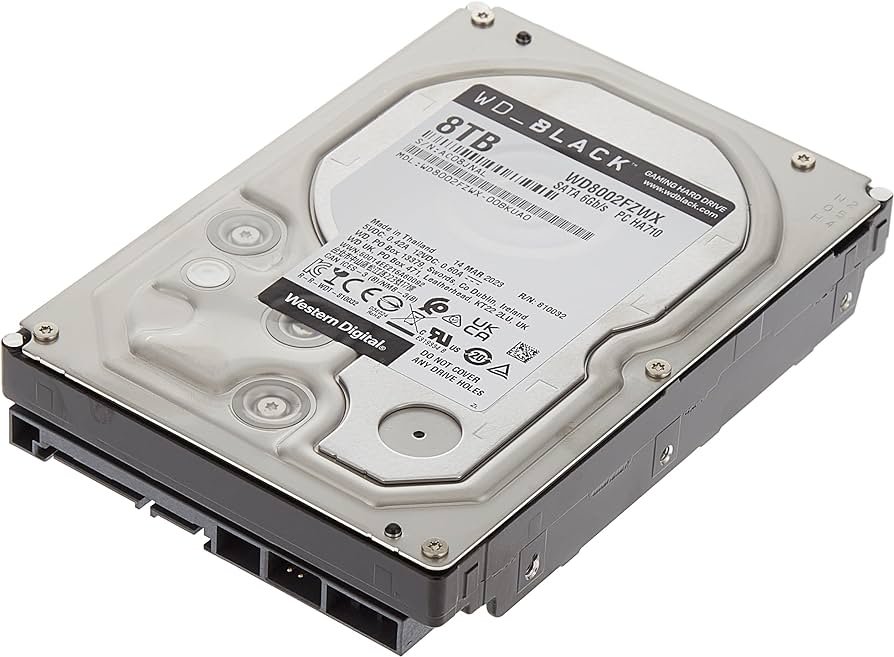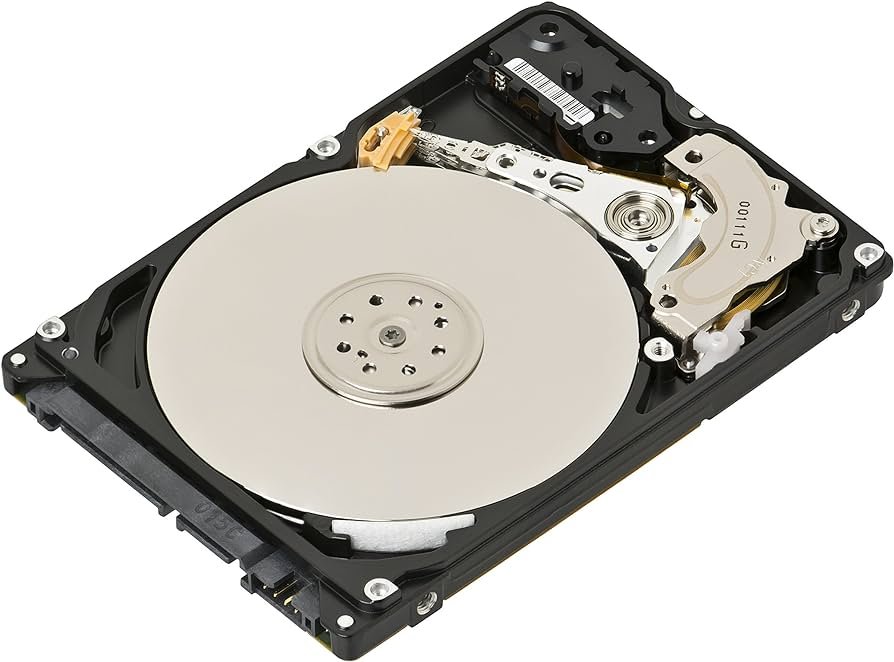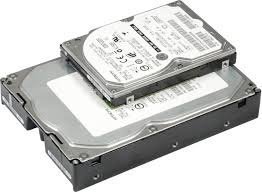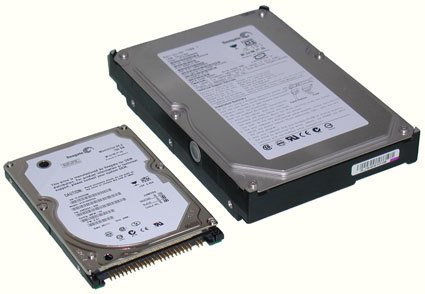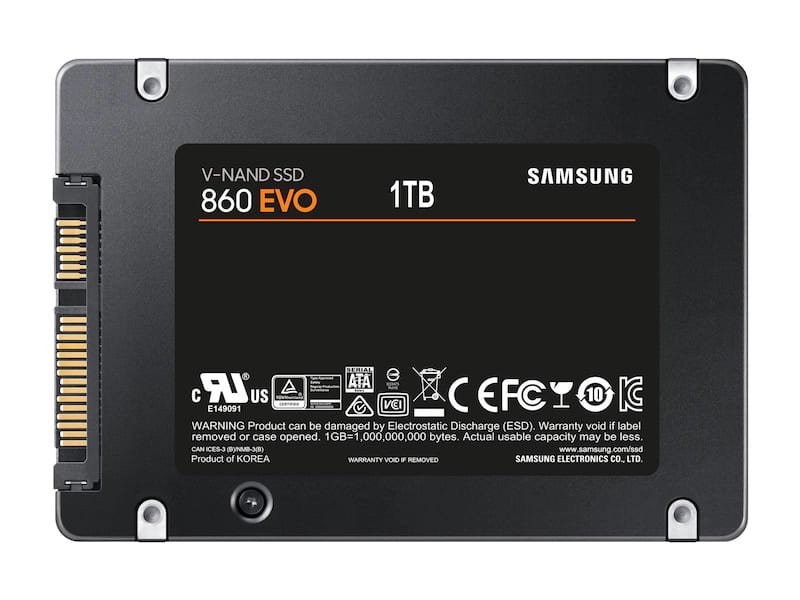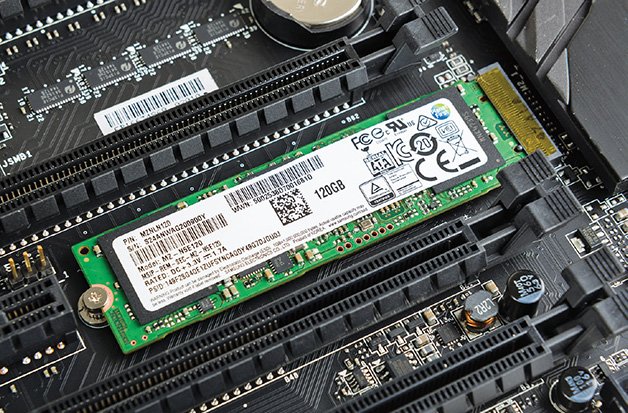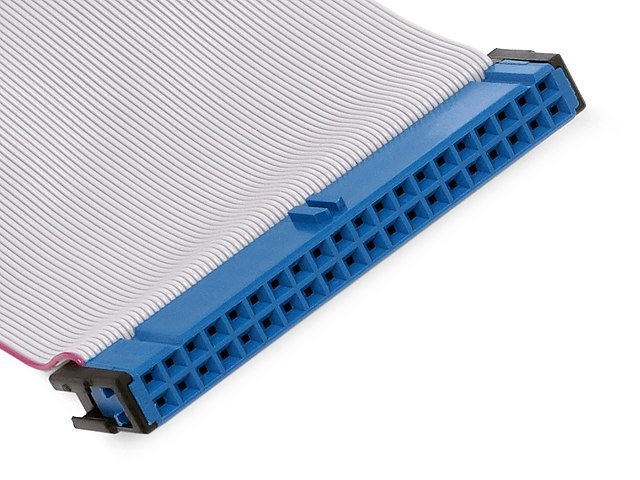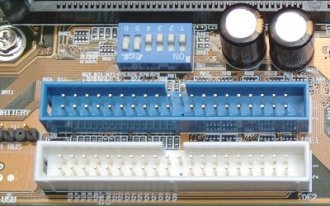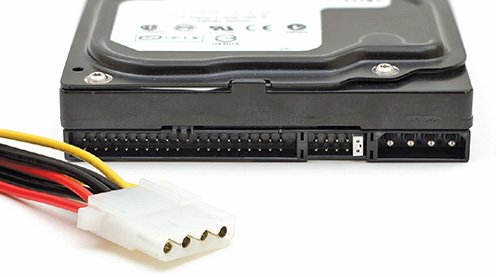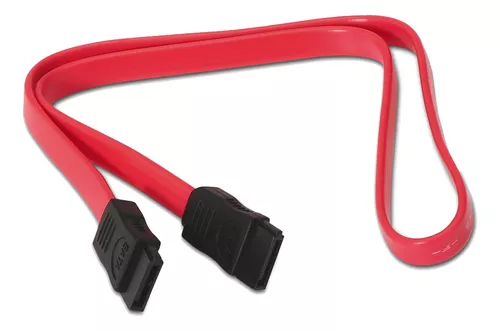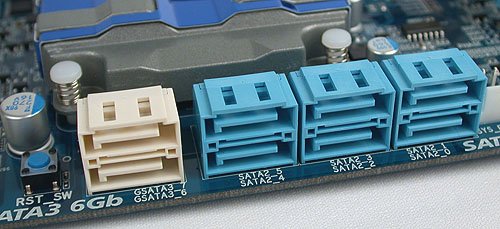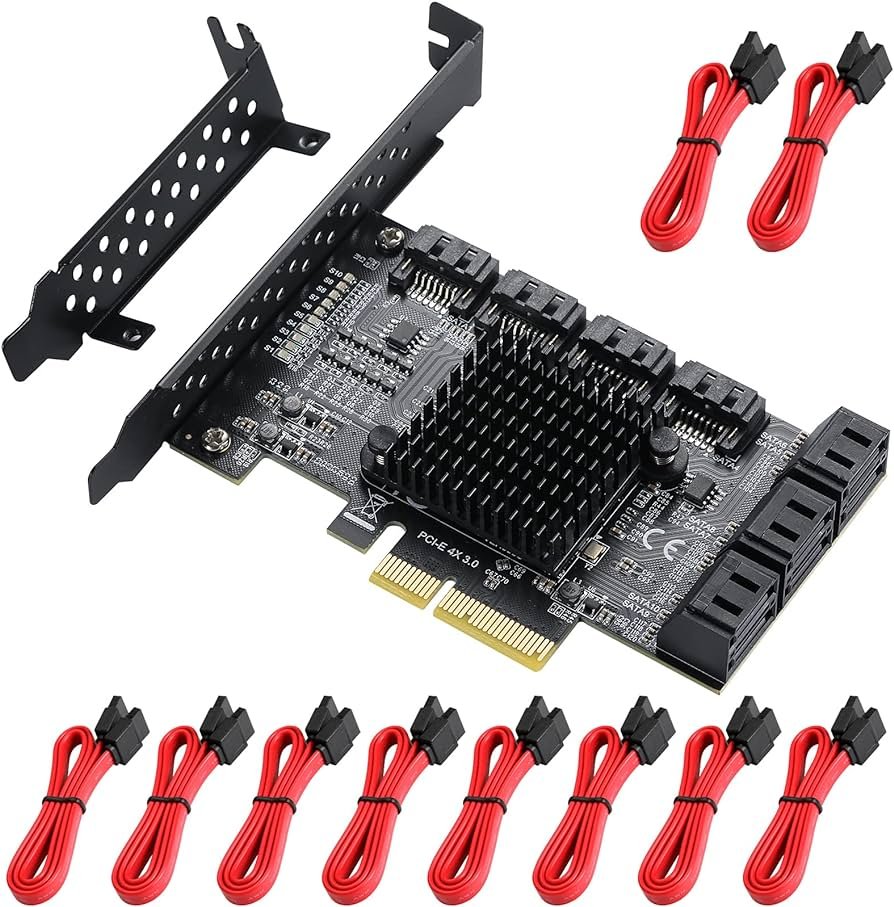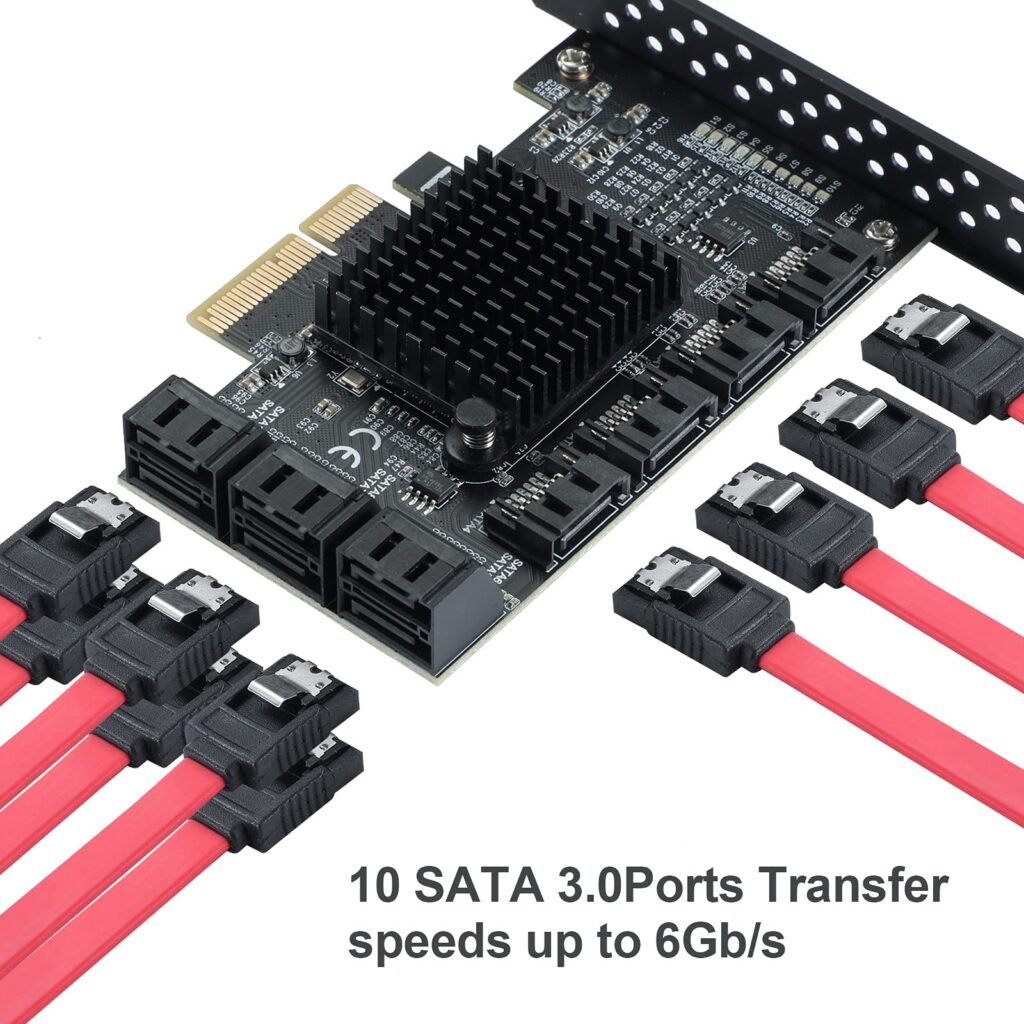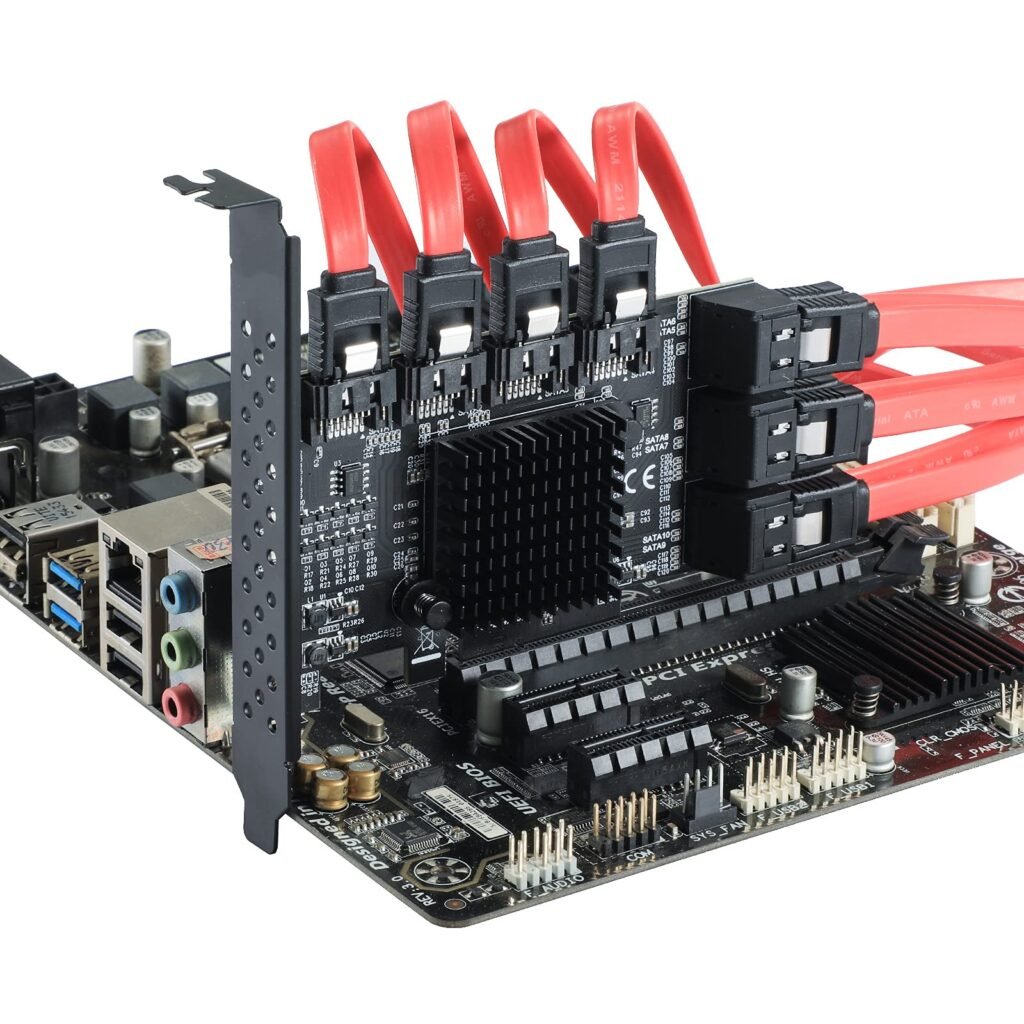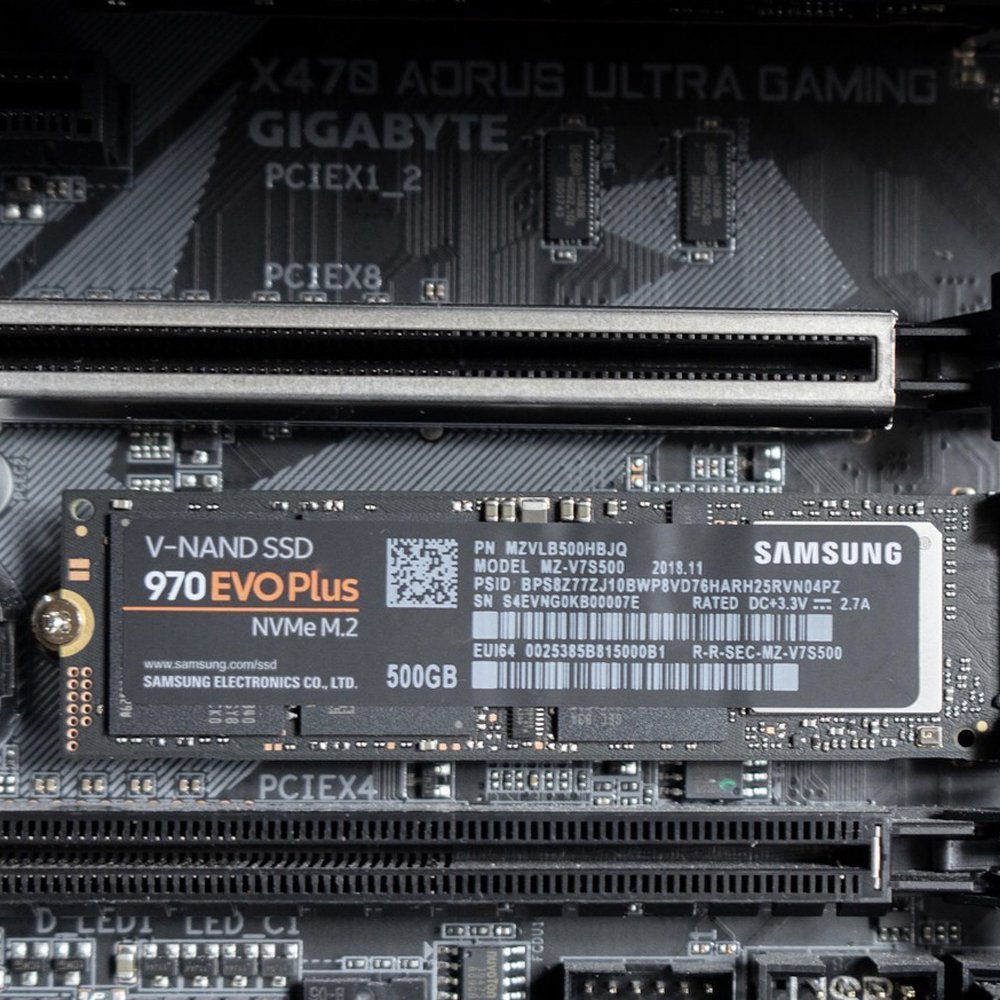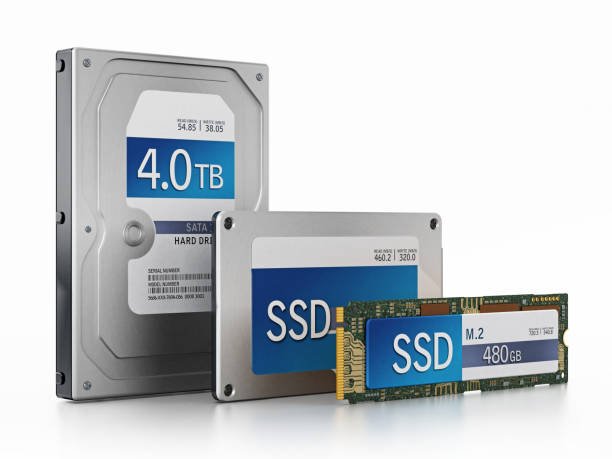
Learn about the advantages of SSD over HDDs in terms of speed, power consumption, and durability. One of the key advantages of SSD over HDDs is their speed. SSD have significantly faster read and write speeds compared to HDDs. This is because there are no mechanical components involved in accessing the data on an SSD.
The absence of moving parts eliminates the need for the read/write head to physically move across the platters, resulting in faster data access times. This makes SSDs ideal for tasks that require high-speed data transfer, such as booting up operating systems, launching applications, and loading large files.
If you are in this age range or older, your energy, metabolism, and overall well-being could be quietly declining. Don’t wait until symptoms appear.
Another benefit of SSDs is their lower power consumption. Since SSDs do not require any mechanical movement, they consume less power compared to HDDs. This can be particularly advantageous for portable devices such as laptops and tablets, where battery life is a crucial factor. The lower power consumption of SSDs not only extends the battery life but also reduces heat generation, resulting in a cooler and quieter operating environment.
Durability is another area where SSDs outshine HDDs. Due to their lack of moving parts, SSDs are less susceptible to physical damage caused by shock or vibration.
While SSDs offer numerous advantages, there is one area where HDDs still hold the upper hand – cost per gigabyte. HDDs are generally more affordable when it comes to high capacity storage. This is because the manufacturing process for HDDs is less complex and more established, leading to lower production costs. As a result, HDDs are still preferred for applications that require large amounts of storage at an affordable price, such as data centers or personal computers used for data archiving or multimedia storage.
SSD, HDD Introduction
Of all the hardware in a PC, surely none gets more attention (or causes more angst) than mass storage drives. There’s a good reason for this: if a drive goes bad, data is lost. As you probably know, when data disappears, you have to redo the work, restore from a backup, or worse yet, just say goodbye to the data.
Hard drives come in two major types. First are hard disk drives (HDDs) that store data on spinning platters, with moving read/write heads. Second are the more recent solid-state drives (SSDs), which are faster, contain no moving parts, and have become the predominant form of mass storage for most systems.
HDD (Hard Drives)
A traditional hard disk drive (HDD) is composed of individual disks, or platters, with read/write heads on actuator arms controlled by a servo motor, all contained in a sealed case that prevents contamination by outside air.
Hard Drive Rotation Speed
Hard drives rotate at a set spindle speed, with the spinning platters measured in revolutions per minute (RPM). The faster the spindle speed, the faster the drive stores and retrieves data. By far the two most common speeds are 5400 RPM and 7200 RPM. Higher performance drives (which are also far less common) run at 10,000 and 15,000 RPM.
Faster drives generally equate to better performance, but they also generate more noise and heat. Excess heat drastically reduces the lifespan of hard drives. For example, an increase of 5 degrees (Celsius) can reduce the life expectancy of a hard drive by up to two years. Airflow through a system’s case improves or impairs system stability, especially when you add new drives that increase the ambient temperature.
Hot systems become unstable and crash at odd times. Many things can impede airflow: cluttered ribbon cables (used by older storage systems, USB headers, and other accessories), drives cramped in a small case, fans clogged by dust or pet hair, etc.
Today, fewer and fewer systems have traditional hard drives. This prevents the units from obstructing airflow to more heat-sensitive components. An optional intake fan at the bottom front of the case can help cool the drives.
Technicians should consider airflow when adding a new hard drive to an old system. Get in the habit of tying non-aerodynamic cables, adding front fans to cases when systems crash intermittently, and making sure the fans are working well.
Finally, if a customer wants a new drive for a system in a small minitower with only the power supply fan to cool it, be nice, but definitely direct the customer to one of the lower RPM or SATA SSD drives.
Form Factors
Hard disk drives are manufactured in two standardized form factors, 2.5-inch and 3.5-inch. You’ll see both form factors in desktops and servers; most laptops use the 2.5-inch form factor. The form factor only defines size.
SSD (Solid State Drives)
Booting up a computer takes time in part because a traditional hard drive needs to spin up before the read/write heads can retrieve data off the drive and load it into RAM. All of the moving metal parts of a platter-based hard drive use a lot of power, create a lot of heat, take up space, wear down over time, and take a lot of nanoseconds to get things done. A solid-state drive (SSD) addresses these issues nicely.
In technical terms, solid-state technology and devices are based on the combination of semiconductors and transistors used to create electrical components with no moving parts. In simple terms, SSDs use flash memory chips to store data instead of all those pesky metal spinning parts used in platter-based hard drives.
Solid state drives are everywhere today. Desktops and laptops use SSDs, and smartphones, USB thumb drives, and other handheld devices all use SSD in some form for mass storage.
SSDs for personal computers come in one of three form factors: the 2.5 inch form factor previously mentioned and two flat form factors called mSATA and M.2. mSATA and M.2 drives connect to specific mSATA or M.2 slots on motherboards. Many current motherboards offer two or more M.2 slots.
Although you can still buy mSATA cards, the technology is on its way out for both laptop and desktop computers, replaced by M.2. The latter standard is half the physical size and offers substantially better performance. SSDs use nonvolatile flash memory that retains data when power is turned off or disconnected.
Ways to connect HDD and SSD
To configure communication between a CPU and a mass storage drive, there must be standardized physical connections between the CPU, the drive controller, and the physical drive. These connections must send data between these devices as quickly as possible while maintaining good security.
Parallel Advanced Technology Attachment (PATA)
PATA drives are easily recognized by their data and power connections. PATA drives used unique 40-pin ribbon cables. These ribbon cables usually plugged directly into a system’s motherboard and are called IDE cables. All PATA drives used a standard Molex power connector

SATA
Despite its longevity as the preferred mass storage interface for the PC, parallel ATA ran into problems. Firstly, the flat cables impeded airflow and could be difficult to insert correctly. Second, the cables were limited in length, only 18 inches. Third, you couldn’t hot-swap PATA drives. You had to shut down the computer completely before installing or replacing a drive. Finally, the technology had simply reached the limits of what it could do in terms of performance.
Serial ATA addressed these issues. SATA creates a point-to-point connection between the SATA device (magnetic hard drives, solid state drives, optical media drives) and the SATA controller, host bus adapter (HBA). At first glance, SATA drives look identical to PATA devices, but if you look closer at the cable and power connectors, you’ll see significant differences.

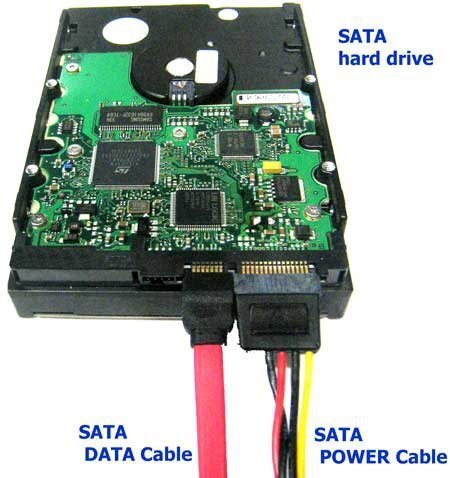
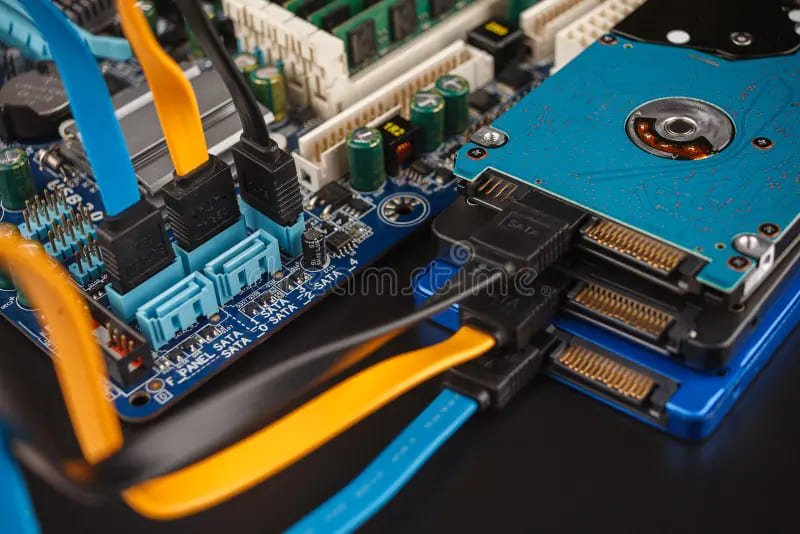
Because SATA devices send data serially instead of in parallel, the SATA interface needs far fewer physical wires, only 7 connectors instead of the 40 typical of PATA resulting in much thinner cabling. Thinner cabling means better cable control and better airflow through the PC case, resulting in better cooling.
Further, the maximum SATA-device cable length is more than twice that of a PATA cable, about 40 inches (1 meter) instead of 18 inches. This facilitates drive installation in larger cases.
SATA killed off PATA’s two wired drives. Each unit connects to one port. Additionally, there is no maximum number of units; Today, many motherboards support up to eight SATA drives. You need more? Insert a SATA HBA into an expansion slot and load it with even more drives.
Installing SSD and HDD
Installing a drive is a fairly simple process if you take the time to make sure you have the right drive for your system, configure the drive and system setup properly, and do a few quick tests to see if it’s running properly.
Choosing Your Drive
First, decide where you’re going to put the drive. If you have a new motherboard, just slip the drive into the M.2 socket and secure it with the tiny screw. If you plan to install a 3.5-inch HDD or 2.5-inch SSD, then you need to go old school. Make sure you have room for the drive in the case. Where will you place it? Do you have a spare power connector? Will the data and power cables reach the drive? A quick test fit is always a good idea.
Heat Management with Multiple Units
Adding three or more fast magnetic hard drives into a narrow PC case can spell disaster for the unsuspecting technician. The heat generated reduces the life expectancy of disk drives and computers. You must manage heat within a system. The easiest way to do this is to add fans.
Open the PC case and look for appropriate places to get an idea of what size the fans should be and mount them. Most cases have 120mm and larger fans. Note the locations of the case fans and visit your local PC store or online retailer to check out the fans.
SATA Drive Cabling
Installing SATA hard drives is a relatively easy and straightforward process because you don’t have to worry about any jumper settings (as in the case of IDE HDD (pata) ) since SATA only supports one device per controller channel. Simply plug in the power and controller cable, the operating system will automatically detect the drive and it will be ready to go. The shapes of the SATA controller and power cables make it impossible to install them incorrectly.
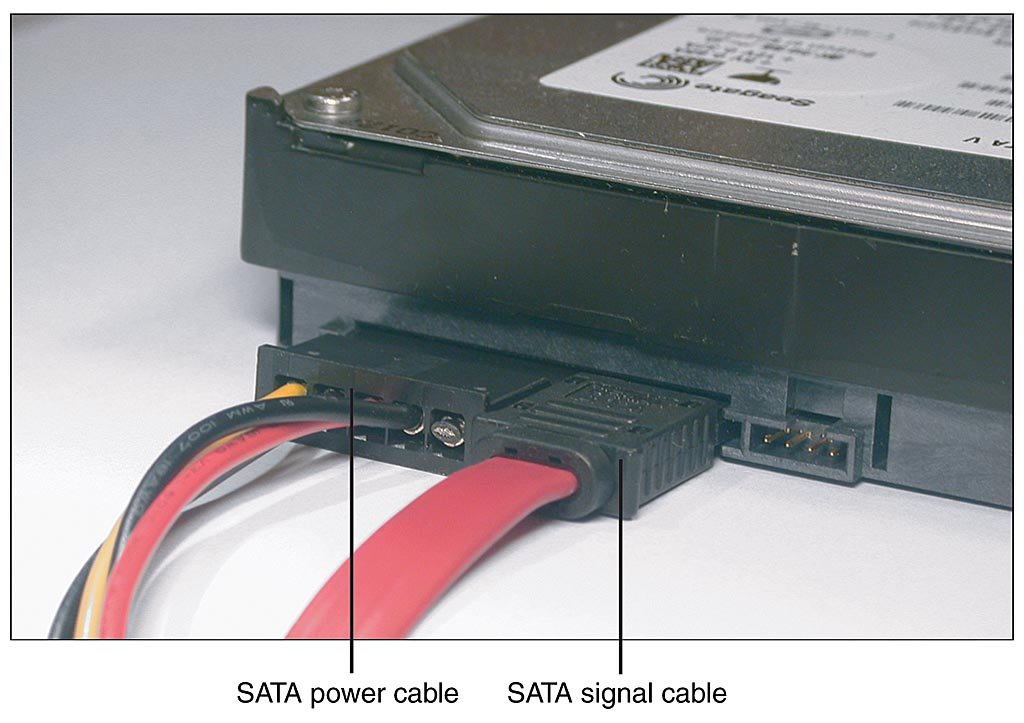
Every modern motherboard has two or more SATA ports (or SATA connectors) built into it. The ports are labeled (SATA 1, SATA 2, etc. up to the number listed). Typically, you install the main drive in SATA 1, the next one in SATA 2, and so on.
Connecting SSD
SATA SSDs have the same connectors as magnetic SATA drives, so installing an SSD would be the same as any SATA drive. SATA SSDs typically come in 2.5-inch laptop HD sizes.
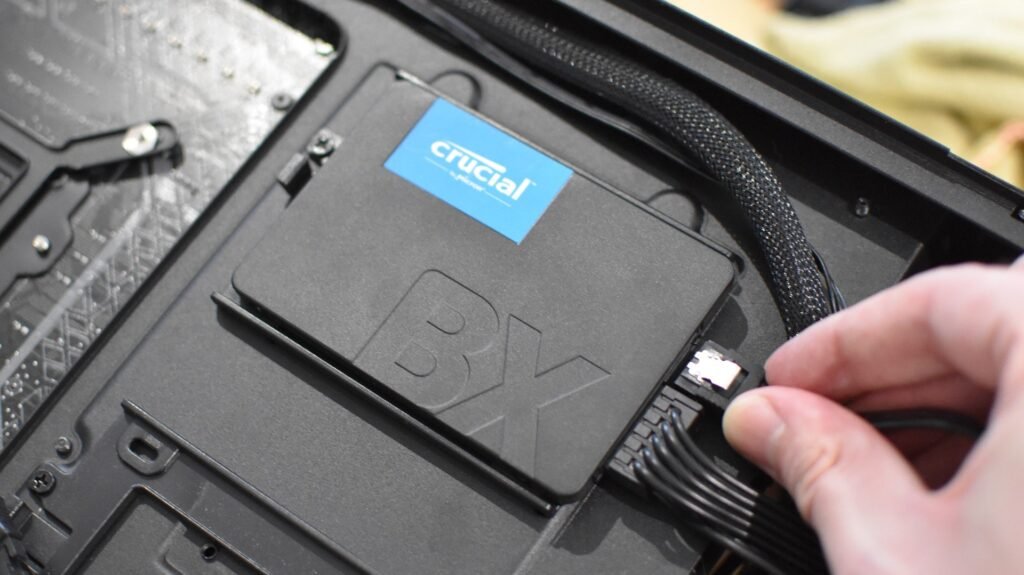
M.2 and mSATA drives slide into their slot on the motherboard or add-in card, then snap into place or secure with a small screw. Both standards have keys, so you can’t install them incorrectly.
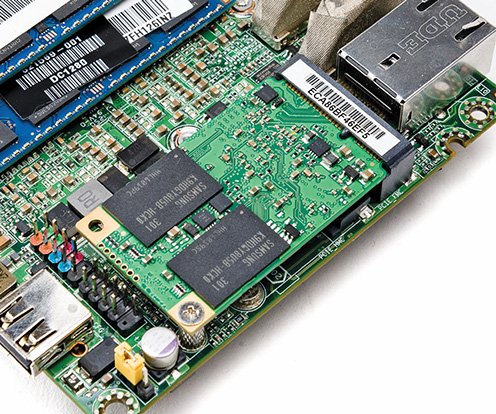
CMOS Setup and Driver Installation
Every device in your PC needs BIOS support, whether it’s traditional BIOS or UEFI. Hard drive controllers are no exception. Motherboards provide support for the SATA hard drive controllers via the system BIOS, but they require configuration in CMOS for the specific hard drives attached.
In the old days, you had to fire up CMOS and manually enter hard drive information whenever you installed a new drive. Today, this process is automated.
HDD and SSD Manufacturers and Brands
When it comes to storage devices, hard disk drives (HDDs) and solid-state drives (SSDs) are the most commonly used options. HDDs have been around for decades, while SSDs are a more recent innovation. In this blog post, we will explore the manufacturers and brands that produce these storage devices, highlighting their features and benefits.
HDD Manufacturers and Brands
Several manufacturers produce HDDs, offering a range of brands and models to choose from. Some of the prominent HDD manufacturers include:
1. Seagate
Seagate is one of the leading manufacturers of HDDs, known for its reliable and high-performance drives. They offer a wide range of capacities and form factors to cater to different user requirements. Seagate’s HDDs are known for their durability and longevity, making them a popular choice among consumers.
2. Western Digital
Western Digital is another well-known manufacturer of HDDs, offering a diverse portfolio of products. Their drives are known for their high capacity and excellent performance. Western Digital also offers specialized HDDs for specific applications, such as NAS (Network Attached Storage) drives and surveillance-grade drives.
3. Toshiba
Toshiba is a prominent player in the HDD market, offering reliable and cost-effective drives. Their HDDs are known for their energy efficiency and quiet operation. Toshiba also provides a range of external HDDs, catering to users who require portable storage solutions.
SSD Manufacturers and Brands
SSDs have gained significant popularity in recent years due to their superior performance and reliability compared to HDDs. Let’s explore some of the leading manufacturers of SSDs:
1. Samsung
Samsung is a well-established brand in the SSD market, known for its high-quality drives. Their SSDs offer impressive read and write speeds, resulting in faster boot times and application loading. Samsung also provides software tools to optimize the performance and lifespan of their SSDs.
2. Crucial
Crucial, a subsidiary of Micron Technology, is a reputable manufacturer of SSDs. They offer a range of SSDs for various applications, including consumer-grade and enterprise-grade drives. Crucial SSDs are known for their reliability, durability, and competitive pricing.
3. Kingston
Kingston is a well-known brand in the storage industry, offering a wide range of SSDs. Their SSDs are known for their consistent performance and compatibility with different systems. Kingston also provides SSD upgrade kits, making it easier for users to migrate from HDDs to SSDs.
Choosing the Right Storage Device
When deciding between HDDs and SSDs, it’s essential to consider your specific requirements and budget. HDDs are generally more affordable and offer higher storage capacities, making them suitable for users who need large amounts of storage at a lower cost per gigabyte. SSDs, on the other hand, provide faster performance, lower power consumption, and better durability, making them ideal for users who prioritize speed and reliability.
Ultimately, the choice between HDDs and SSDs depends on your needs and budget. If you require large storage capacities and are on a tight budget, HDDs are a suitable option. However, if you value speed, reliability, and are willing to invest in a higher-priced storage solution, SSDs are the way to go.
Both HDDs and SSDs have their own advantages and cater to different user requirements. The manufacturers and brands mentioned in this blog post are just a few examples of the many options available in the market. Whether you choose an HDD or an SSD, it’s crucial to consider factors such as performance, reliability, and pricing to make an informed decision. Remember to assess your needs and budget before selecting the most suitable storage device for your requirements.
Troubleshooting SSD and HDD Installation
A technician’s best friend when it comes to troubleshooting hard drive installation problems is the auto-detect feature of the CMOS Setup Utility. When a unit does not work, the first thing you should check is if you connected both the data cable and the power cable correctly.
With automatic detection, the answer is simple: if the system does not detect the drive, there is a problem with the hardware installation.
Make sure the BIOS recognizes the hard drive. Use the CMOS setup program to check it. Check the physical connections and then check these problems in CMOS.
Discover More of Technology Splendor: Explore Our Other Sites
Health Fuels Everything
Energy, clarity, and balance are the foundation of every dream. Without health, wealth loses its shine and relationships lose their spark. Discover strategies to strengthen your body, sharpen your mind, and energize your spirit.
Discover Your Integral HealthRelationships Give Life Meaning
Health gives you energy. Wealth gives you freedom. But only deep, authentic relationships give life true purpose. Discover the tools to connect, love, and communicate at your best.
Improve Your Relationships